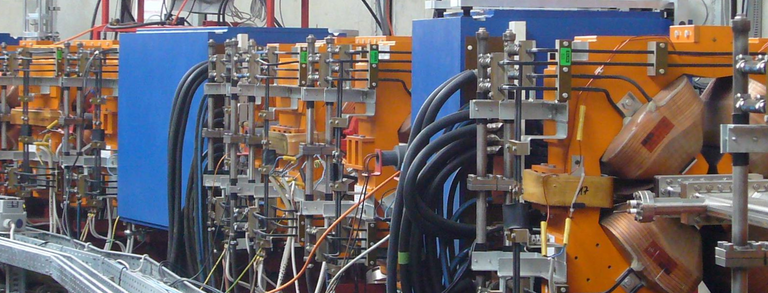Prof. Dr. Xijie Wang
Department of Physics
Center for Synchrotron Radiation
Maria-Goeppert-Mayer-Str. 2
44227 Dortmund
Tel. : +49 (0)231 755-5370
Fax: +49 (0)231 755-5383
Mail: xijie.wangtu-dortmundde

„The research in my group is to explore Mega-electron-volt (MeV) ultrafast electron diffraction and imaging (MeV-UED/MeV-UEM) for ultrafast material, chemical and biological science. We pioneered the idea using MeV electrons for MeV-UED and MeV-UEM 1-2. MeV-UED became a new frontier in ultrafast science due to its capability of following dynamics on femtoseconds scale with the high spatial resolution and sensitivity 3-4. Furthermore, MeV electrons experience less multiple-scattering, and possess “real” flat Ewald-sphere; MeV ultrafast electron diffraction (MeV-UED) is an ideal tool to explore both structure and dynamics using total scattering technique. MeV-UED had broad and transformative impact on ultrafast science, such as the first 2-D materials ultrafast structure dynamics 5, break the long-standing puzzle of efficiency degradation of quantum dots 6, light-induced transient states of quantum materials 7-8, the first direct imaging of fundamental chemical processes 9-10 and hydrogen bond dynamics in liquid water 11. Recently, we have demonstrated the first operando experiment in ultrafast 12, the successful ultrafast visualization of incipient plasticity in dynamically compressed matter 13, the observation of Einstein-de Haas effect in an antiferromagnetic material 14 and capturing the generation and structural transformation of molecular ions 15. We propose to develop new generation MeV ultrafast scattering instrument in Ruhr aera to address grand challenges in material, chemical and biological science, such as imaging proton transfer and disentangling electron-nuclear coupling.“
1 X.J. Wang et al, Phys. Rev. E , 54, No.4, R3121 -3124 (1996)
2 X.J. Wang et al, Proceedings of the 2003 Particle Accelerator Conference, 2003, pp. 420-422 Vol.1, doi: 10.1109/PAC.2003.1288940
3 P. Zhu et al, New Journal of Physics 17 (6), 063004 (2014)
4 S. Weathersby et al, Rev. Sci. Instrum. 2015, 86, 073702−073707
5 E. M. Mannebach et al, Nano Lett. 15, 6889 (2015)
6 Burak Guzelturk et al., Nat Commun 12, 1860 (2021)
7 E. J. Sie et al, Nature 565,61–66(2019)
8 A. Kogar et al, Nat. Phys.16, 159 (2019)
9 J. Yang et al, Science 361, 64 (2018)
10 T. J. A. Wolf et al, Nat. Chem. (2019)
11 J. Yang et al., Nature 596, 531–535 (2021)
12 J. A. Sood et al, Science 373, 352 (2021)
13 M. Mo et al, Nat. Commun. 13, (2022)
14 A. Zong et al., Nature 620, 988–993 (2023)
15 J. Heo et al, Nature 625, pages 710–714 (2024)










